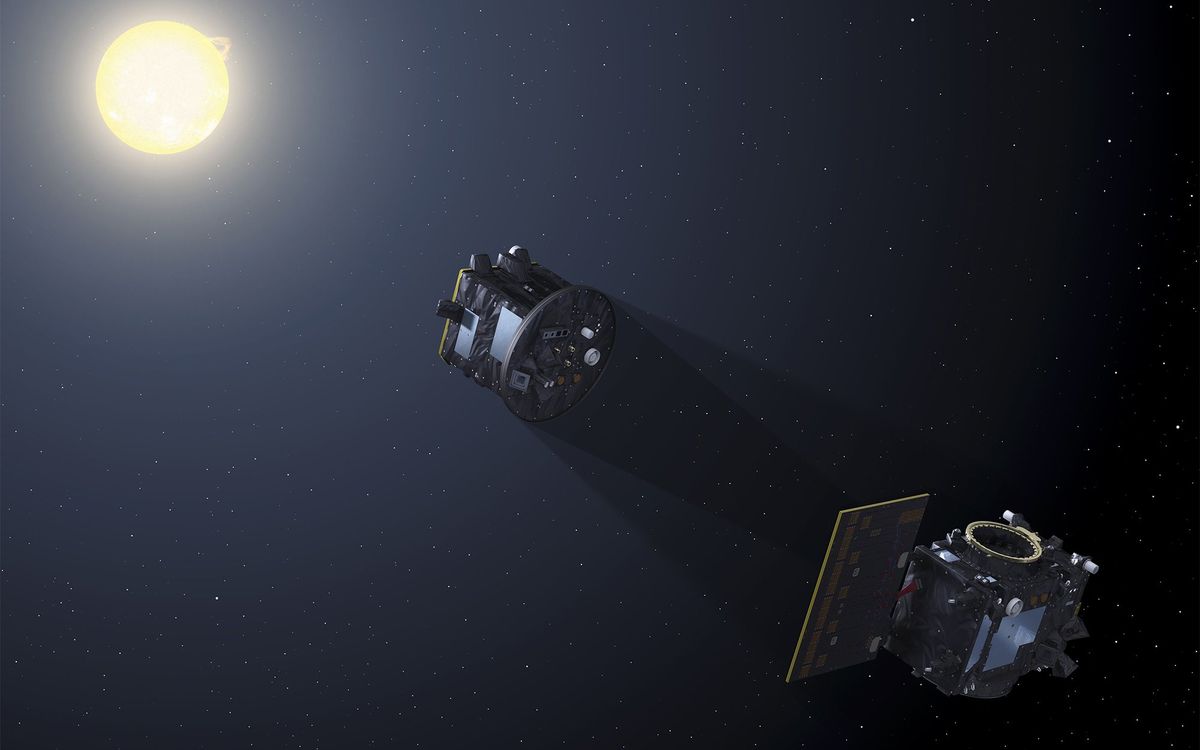What are satellites but very fast balloons in outer space? While seemingly a tortured metaphor, not only are both technologies being developed to provide broadband access to traditionally hard-to-reach places, but one company, Telesat, is wondering if its satellites might benefit from some of the tricks that Loon is using to create its balloon-based networks.
In the coming years, Telesat plans to launch hundreds of fast-moving satellites to deliver broadband to vast swaths of the globe. These satellites, which are smaller than bulky geostationary communications satellites, would receive a signal from one point on Earth, send it from satellite to satellite in the network, and finally beam it back down to wherever it needs to go. “We’re creating a routable Internet in the sky,” says Erwin Hudson, vice president of Telesat LEO.
Telesat isn’t the only company trying to use satellites to provide Internet access—companies like OneWeb and SpaceX have similar goals. But as Hudson points out, building such a large constellation is new ground. “No one’s ever built a broadband constellation with hundreds of satellites,” he says. “It’s not like there’s a ‘this is how it’s always been done.’”
That’s why Telesat has approached Alphabet-owned Loon, which is using balloons to provide cellular coverage to areas without expansive telecom infrastructure. When building its balloon-based network, Loon was similarly in uncharted territory. Now, Loon will develop the radio equipment and network software that controls its balloons into a system that could work for Telesat’s satellites. (Telesat is also exploring other possible solutions for its constellation.)
By all accounts, however, Loon has succeeded in its mission. Loon’s balloons provided coverage to Puerto Rico in the aftermath of Hurricane Maria and now plans to launch a network across Kenya. And one of the key challenges they had to solve—the one that is particularly enticing to Telesat—is making sure each balloon stays in contact with the balloons around it, even though they’re constantly drifting in the stratosphere.
Any terrestrial wireless system is comparatively easy to align: Point the transmitter at the receiver and congratulations, you’re all set. But for a balloon in the sky, you can’t just point the transmitter at another balloon and call it a day. That second balloon will never stay in exactly the same place. In fact, in Loon’s case, individual balloons might drift across several square kilometers as they use winds to position themselves over the same bit of ground.
Loon’s solution was to outfit every balloon with a software-defined network (SDN) that its engineers had developed. Each balloon’s SDN allows it to keep in touch with the balloons around it, as well as any receivers on the ground, and uses antennas mounted to beach-ball-sized gimbals. Regular, minute adjustments made by these gimbals keep the balloons in contact with each other, no matter where the winds take them.

In fact, Loon’s challenge was in many ways more complicated than the one Telesat faces. “Their balloons are a bit less predictable. The nice thing about satellites is their orbits are predictable,” says Hudson. “If we know where the satellite is today, we’re pretty sure we’ll know where it is tomorrow.” A spokesperson for Loon echoed the sentiment, saying that Loon’s SDN wouldn’t require any significant redesigns to work for a constellation in low Earth orbit (LEO), in part because orbiting satellites are quite predictable.
There is one way in which satellites are more challenging, however. According to Hudson, the satellites in Telesat’s planned constellation will have roughly a 100-minute orbit. That means, if you’re on the ground, you’ll only be able to send and receive signals to an individual satellite for 6 or 7 minutes before your connection must be handed off to the next one.
Even so, both Loon and Telesat are optimistic that Loon’s SDN can be easily adapted to LEO constellations. And it’s fortunate that it should be simple—Telesat intends to launch the first phase of its constellation in 2022. The first phase will see 12 satellites each launched into 6 polar orbits, for a total of 72. A second phase of satellites will launch later, carrying 120 more satellites into equatorial orbits. A final round will include a further 100 satellites, for a grand total of 292 by the time the constellation is complete.
With any luck, Telesat’s goal to build a LEO constellation to provide broadband will be as solvable as Loon’s efforts to bring broadband via balloon. The company’s first steps seem promising, as Telesat is now conducting tests with their first LEO satellite already in orbit, and recently partnered with Global Eagle to provide in-flight broadband from the satellite.
This post was updated on 7 February 2019.
Michael Koziol is an associate editor at IEEE Spectrum where he covers everything telecommunications. He graduated from Seattle University with bachelor's degrees in English and physics, and earned his master's degree in science journalism from New York University.



